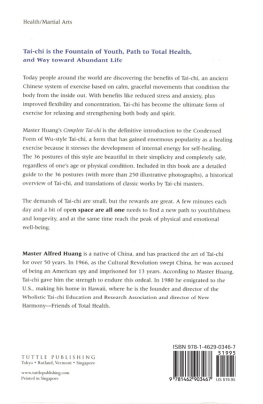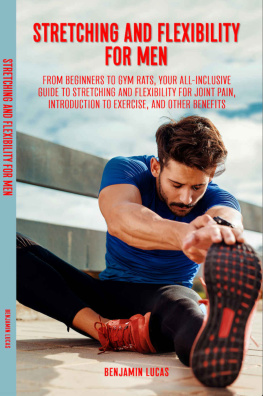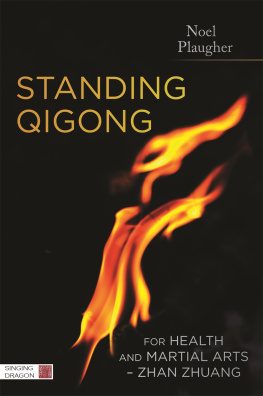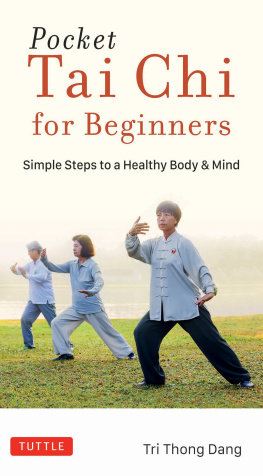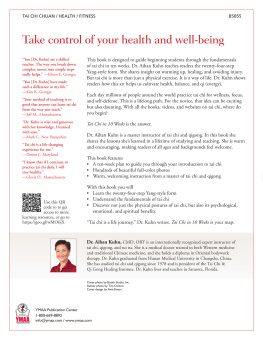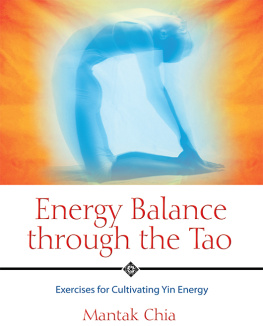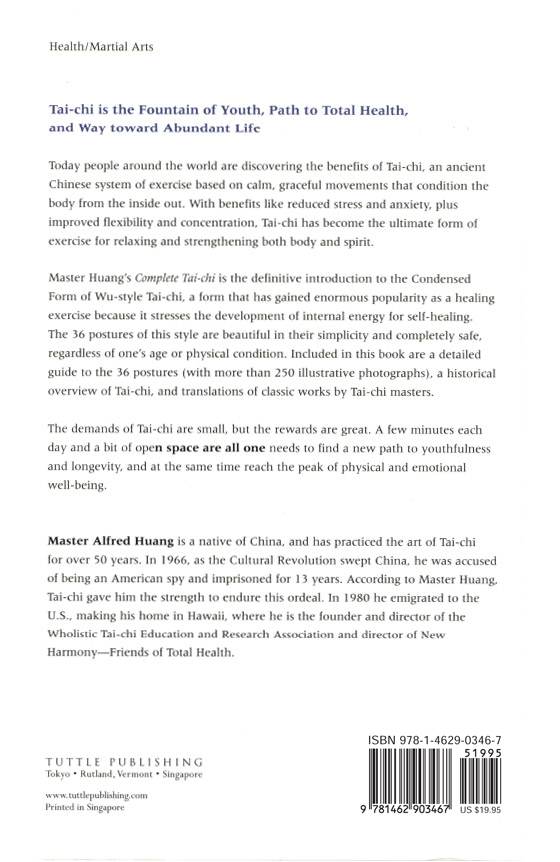SINCE 1958 when I recorded my Tai-chi master's profound experiences, I have longed to create a book that could truly help readers to learn Tai-chi and enjoy its benefits. Through the help of students and friends such as Jody McNeff, Karen Rossie, William Rehm, and Kathy Fill, all of whom worked seriously and patiently with me when I was writing this book, I have been able to realize my long-cherished dream. After I moved from Pittsburgh to Hawaii, Gale Free came to my class. She enthusiastically helped me with the final revision of my manuscript. Through her sincere love I experienced the harmony of yin and yang, the dance of the souls, and the tao of Tai-chi. I express my hearty gratitude to Yojana, my student and good friend, who proofed the final revision, and to my photographic artist, Mr. Blaine Michioka, who was always serious and patient as he took over three-hundred pictures for this book. Before taking pictures, he attended several of my classes to watch the spirit of Tai-chi. I would also like to thank the staff of the Charles E. Tuttle Publishing Company, who put much time, energy, and enthusiasm into working on my book.
In presenting this work on Tai-chi, I would like to acknowledge the valuable contribution of the extensive research that has been done in mainland China, especially that of Mr. Tang Hao and Mr. Ku Liu-hsing. Over a period of more than twenty years, Mr. Tang studied and organized the history of Chinese physical education and martial arts. Mr. Tang's efforts have been continued by Mr. Ku, supervisor of the Shanghai Scientific Institute of Physical Culture and Sports Commission and the Shanghai Scientific Institute of Physical Culture. Mr. Tang's and Mr. Ku's work has also made it possible for me to include many important translations in this book.
I express thanks to all my students and good friends who contributed their energy and love to the preparation of this book.
Understanding
the Structural Framework
of the Body
TAI-CHI is one of the cultural pillars of China. It is based on the ancient philosophy of living in harmony with nature. We are upright beings who spend almost two-thirds of our life in the upright postures of standing, sitting, and walking. When we are standing or moving, the weight of our body rests on a surface the length of which is less than one-sixth the height of the body. In practicing Tai-chi, we usually put our weight on one foot. At first, this may seem quite unstable. If our body is in proper alignment with gravity, it uses gravity to hold it up. The body is actually kept stable by gravity's constant downward pull, and if part of the body is off-center, we are forced to expend considerable energy holding it up and keeping it balanced.
If our body is in alignment with gravity, and our movements are in alignment with body mechanics, we are in harmony with nature. Most of us start out with a proportional body, one that is erect, slim, well-aligned, and easy to move. By the age of thirty-five, many of us develop rounded shoulders, broad hips, and a protruding abdomen. When we become elderly, we sometimes appear to be pear-shaped. One of the reasons is that years of gravitational pull and postural misalignment have changed our body proportions. Misalignment of posture affects not only the body, but also the inner organs and the emotions of the individual.
To the Chinese, humans are unitary beings. A person's body, its structure and posture; the way he moves, what he thinks, what he cares about; his personality, his perspective on life, and his relationships with people; these are all part of a whole, and constitute his "core." To the Chinese, the core comprises the unity of body, mind, and spirit. All of these aspects are interrelated, and one cannot be changed without influencing the other. This holistic view of "being" has been rooted in Chinese culture for thousands of years.
Since the Chinese are interested in all-natural, holistic methods of prevention and healing, they believe that in changing their physical aspect through proper exercise, they simultaneously change the psychological and emotional aspects of their being. This is why Tai-chi is so popular in China. The Chinese regard Tai-chi as a therapeutic treatment. It is the Fountain of Youth, Path to Total Health, and Way Toward Abundant Life.
Our postures and movements have been learned, either by trial and error or by imitation. Once they have been learned, their performance becomes automatic, but not always effective. Beneficial movement should not only be effective, it should also conserve energy. Expending a minimal amount of energy to do work should become natural. Unfortunately, not all exercise can provide beneficial movement. This is the reason that our potential for movement is rarely developed to its fullest. Tai-chi is one of the few exercises that provides an education in movement emphasizing effectiveness, efficiency, and endurance. When we are practicing Tai-chi, we use mind rather than strength, and energy rather than force to move the body. The whole system of Tai-chi uses images of movement to achieve good body alignment and efficient body mechanics. This is accomplished by imitating the movements of birds and animals, and imagining how alive, graceful, energetic, and light their movements are. All these movements show that they are performed with minimum effort and achieve maximum results. If their movements were not developed to the highest potential, how could they survive in the natural environment?
Movement is a neuro-musculo-skeletal activity. In practicing Tai-chi, we establish a clear concept or mental picture of movement in our minds, and leave the central nervous system free to mobilize the most efficient neuro-musculo-skeletal coordination. The sequence of movement should be performed slowly, gently, and gracefully, with sharp consciousness of body alignment, functional movement, and coordination of movement with breathing. Emphasis is placed on inner awareness. At the same time, we let our central nervous system be free to feel the equilibrium and the balance of the body, and to direct movement and posture. The whole process of practicing Tai-chi involves reconnecting the mind to the body, the conscience to the subconscious, and the individual to nature or the universe. In such a body, every joint is flexible, every muscle is free of tension, every movement is natural and graceful, and every inner organ is held in the right place and functions well.
In learning to practice Tai-chi, you must first learn to affect the postures properly. Postures are elements of movement. It is only when one is able to affect the postures properly that one is able to perform the movements correctly. Posture, in Chinese, is called "framework." It is the framework of movement. In Mandarin, or standard spoken Chinese, practicing Tai-chi is called "posing the framework." Because posing the framework has been regarded as the fundamental achievement of Tai-chi, one must learn to stand in different positions, attaining and maintaining equilibrium and balance in various postures before learning the innumerable movements in sequence. In this book I am following the old tradition of training the apprentice by laying a solid foundation for further achievement.
When looked at from a mechanical point of view, the human body is a living machine. Therefore, the study of posture is primarily an engineering study. Any attempt to teach postures while only taking external form into account and neglecting biological and mechanical principles can hardly be successful. In the classics, the grand masters did not explain their experiences in scientific terms, but through long years of practicing and pondering, their experiences were in accord with the design of the human skeletal framework, the mechanical principles of balance, and the laws of mechanical advantage. Once they had experienced using minimum effort to obtain maximum achievement in Push Hands or martial combat, they knew that their postures and movements were correct. Now that numerous scientific studies of movement have been performed in the Western world, the grand masters' experiences can be explained in a more scientific manner.

